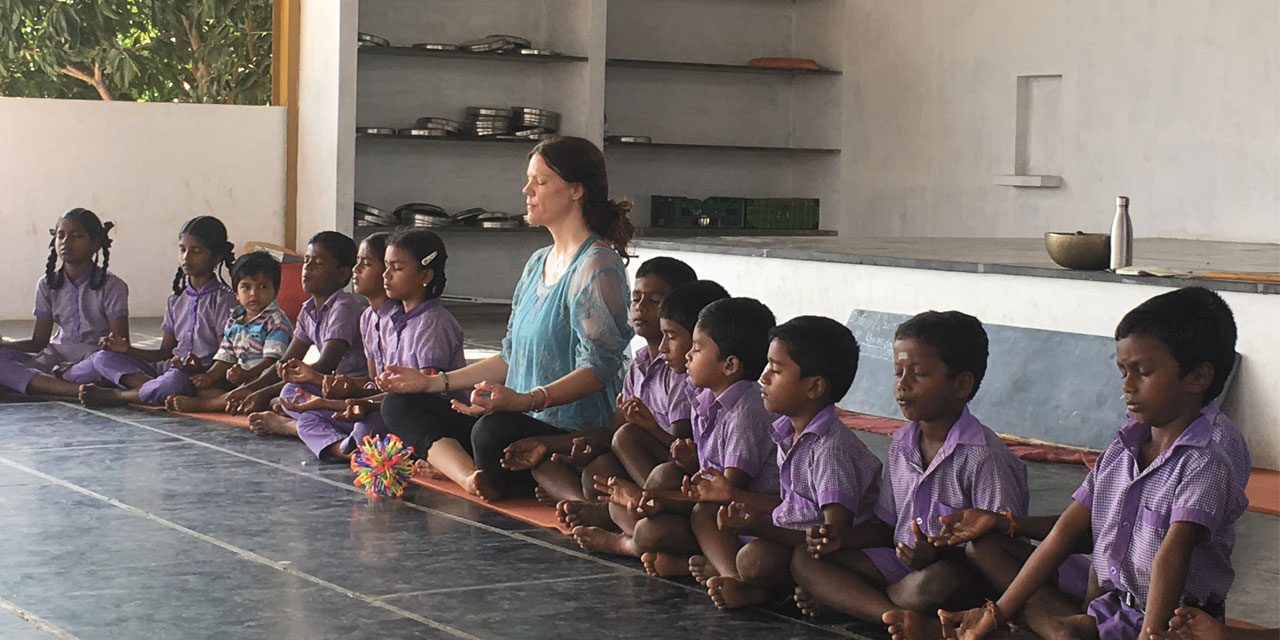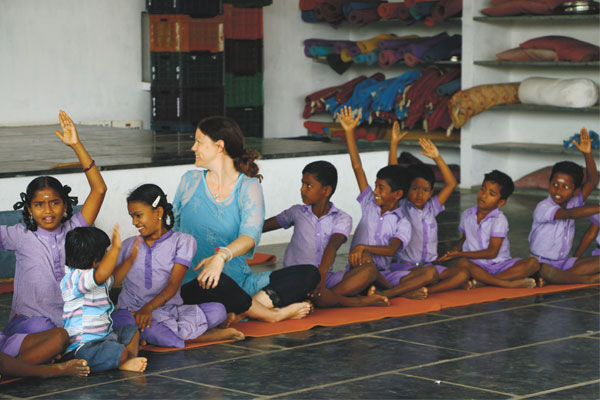
The eightfold path of yoga for children
Introducing yoga’s eightfold path - Patanjali’s template for a meaningful life - to children. By Bryony Duckitt
Without philosophy, yoga would be gymnastics. It is, in fact, a way of life. Yoga is not just about the physical poses but is made up of eight different parts - the so-called eight limbs of yoga. This eightfold path is the heart of yoga philosophy and offers a way to develop a healthy, peaceful life. This ancient code consists of universal principles, personal disciplines, postures, breathing, focus, concentration, meditation and the opportunity to experience joy in every moment.
These eight limbs of yoga are:
1. Yama: social restraints or ethical values, like universal commandments
2. Niyama: our personal disciplines
3. Asanas: physical exercises
4. Pranayama: breath control or regulation
5. Pratyahara: sense withdrawal in preparation for meditation
6. Dharana: concentration
7. Dhyana: meditation
8. Samadhi: ecstasy/enlightenment
The Yoga Tree of Life
To introduce the eightfold path to children we explore the yoga Tree of Life and share examples as we move through it. Ultimately, to teach children how to ‘live’ their yoga, we as teachers need to truly practice what we teach. In this way they will hopefully observe and absorb a good deal of our practice. By understanding and following the Eightfold Path children can achieve a healthy body, wise mind and the ability to feel compassion, ultimately finding true inner peace and reflecting this outwardly too.
1. Yama – The Roots
1. Ahimsa - Non-violence
Violence is not only physical but can manifest in the words we speak. Encourage children to speak with kindness to others and to themselves. Develop positive affirmations together.
2. Asteya – Non-covetousness / stealing
Encourage children to come up with their own creative ideas and if they are to copy someone or something – to give credit. Do not take anything that does not belong to you. Think about how you would feel if something was taken from you. This is important with time keeping too: being late is stealing another person’s time.
3. Satya - Truth
Always speak your truth and act in a way that is true to your inner self and integrity. Only make promises that you can keep. Honesty creates trust and more self-confidence.
4. Brahmacharya – Self-control
This yama is about greed and desire, which is a big problem in today’s society - we always want more! This can refer to food, sweets, toys, clothes, new technology etc. Teach children not to take more than they need and to be grateful for what they have.
5. Aparigraha – Non-accumulation of needless wealth and materials, non-possessiveness.
For many children the amount of possessions they have is very important (media and advertising have a lot to answer for here). Ultimately, we are trying to detach from too many possessions.
2. Niyama – The Trunk
1. Saucha - Cleanliness and purity
This refers to our bodies, thoughts and words. As adults we can set the example by living a clean, balanced life with exercise and healthy food, caring for the environment and not speaking negatively in front of children.
2. Santosha - Satisfaction and contentment
This may be one of the most important Niyamas – to be satisfied with all that we have and all that we are. To accept what is and remain unaffected by what may be taken away.
3. Tapas – Self-discipline – the ability to try and work hard
Encourage children to practice yoga at a certain time each day/week as this will develop positive habits. Perhaps a few sun salutations each morning or five minutes of quiet sitting.
4. Svadhyaya - Introspection and self-study
Children have many questions, encourage them to think and discuss. Introduce meditation and contemplation exercises to know one’s self and try to be the best person you can be.
5. Ishvara - Pranidhana - Faith in a higher power/source
A belief or understanding in something bigger than ourselves/ego. Not driven by individual wishes and desires.
3. Asana/Poses – The Branches
By practicing physical asanas, we improve our circulation, respiration and digestion. Our body becomes stronger and supple and our memory, concentration and willpower improve. Asanas help us to be calm and are very important for a healthy body and mind. In children’s yoga we explore traditional poses in fun accessible ways. Some represent living things - Cobra, Lizard, Eagle, Tree or mimic natural forms – Mountain pose. Others represent man-made objects such as Boat, Bridge, Chair or are inspired by geometric shapes – Triangle. We also give the children opportunities to make up their own poses.
4. Pranayama/Control of Breath – The Leaves
Practice breathing exercises to teach about inhalation and exhalation. There are many fun ways to introduce children to their breath – blowing feathers and bubbles, breathing with the Hoberman Sphere, belly breath etc. Until a child is 12 years old and their lungs have fully developed it is important not to encourage retention of breath.

5. Pratyahara/Control of Senses – The Bark
Here we use poses and activities to stimulate and educate the senses, such as eyes around the clock, listening to different sounds with the eyes closed, mindful tasting, smelling different scents, feely bags etc.
6. Dharana/Concentration – The Sap
Balancing poses such as Tree, Warrior 1, 2 and 3 are wonderful for increasing focus and concentration. Present warriors in the context of determination, perseverance, focus, concentration, strength and personal power. Try to incorporate affirmations such as “I am brave. I am balanced. I have the strength and focus to realise my dreams.”
7. Dhyana/Meditation – The Flowers
Relaxation and guided imagery are ways to introduce meditation to young children. Encourage drawing mandala meditation, sitting meditation and mindful exercises. Dhyana should be uninterrupted, deep concentration for a prolonged period.
8. Samadhi/Enlightenment – The Fruit
We cannot show this full realisation to a child, but the feeling just after you have eased yourself up from your relaxation – blissed out and happy – might be just a tiny glimpse of Samadhi.
Children’s yoga is not just about story telling or clowning around. When practicing yoga poses with children, it is important to introduce them to yoga theory and philosophy too. To give them an understanding of yoga in its entirety so that they are not blindly following what you are doing. They can then internalise a greater knowledge of yoga’s benefits, where it originated and all aspects that will take their practice to a deeper level.
Bryony Duckitt, founder of YogaBeez Children’s Yoga School runs accredited teacher trainings in the UK and overseas (yogabeez.com)




